A friend of mine is offering a 80-300mm zoom lens at a good price for a 35 mm camera. Im not a total newbie, i kinda know how zoom lenses work, however i have one thing bugging me: afaik, the general rule for zoom lenses is that the magnitude of zoom = max foc. length/min foc. length or something like that. However, something tells me that the image projected at 80mm is 1.6 times bigger than the 50mm foc. length that is considered "normal" for 35mm cameras. So, 1.6*(300/80) is 6x zoom. Or is it 300/80=3.75
Navigation
Install the app
How to install the app on iOS
Follow along with the video below to see how to install our site as a web app on your home screen.

Note: This feature currently requires accessing the site using the built-in Safari browser.
More options
You are using an out of date browser. It may not display this or other websites correctly.
You should upgrade or use an alternative browser.
You should upgrade or use an alternative browser.
80-300mm lens. What is the magnitude of zoom it would offer?
- Thread starter Sash[DSL]
- Start date
jadin
The Mad Hatter
- Joined
- Feb 18, 2004
- Messages
- 1,753
- Reaction score
- 10
- Location
- Down the Rabbit Hole.
- Website
- jadinhanson.smugmug.com
Can I ask why would it matter?
Goofup
TPF Noob!
- Joined
- Feb 21, 2004
- Messages
- 141
- Reaction score
- 0
- Location
- Middle of Oklahoma
- Can others edit my Photos
- Photos OK to edit
I would take your camera body over to your friends house and put the zoom on your camera. This will show you the two most important things:
1- Will it even work with your camera?
2- You can actually look through the viewfinder and see if it will do what you need it to- and that's all that matters, right?
1- Will it even work with your camera?
2- You can actually look through the viewfinder and see if it will do what you need it to- and that's all that matters, right?
jadin
It matters because I already have a zoom lens, its 1.6x zoom. It is a very good all-purpose zoom lens, BUT when i try to take candid shots of people, its zooming ability is just not enough, I still have to be pretty close to the person to take a good portrait shot. If the zoom on 80-300mm is 3.75x, it will definitely be much better, but still not good enough. If its 6x, that will mean I can take a portrait pic from across the street, which will be much handier
Goofup
Yes, the lens does fit the camera, i saw it on the camera and looked through the viewfinder, its fine. It would really take me a while to see if it would do what I need to do, and the seller needs to sell it either to me or some1 else ASAP. HOWEVER, I have seen people work with 6x zoom digital cameras, and it did quite a good job. I do realize that its hard to compare digital to 35mm beccause of different resolutions of CCD sensor, but im pretty sure 6x will get me what I wANT. 3x wont do it.
SO WILL SOME1 PLEASE JUST TELL ME IF ITS 3.75 or 6X
It matters because I already have a zoom lens, its 1.6x zoom. It is a very good all-purpose zoom lens, BUT when i try to take candid shots of people, its zooming ability is just not enough, I still have to be pretty close to the person to take a good portrait shot. If the zoom on 80-300mm is 3.75x, it will definitely be much better, but still not good enough. If its 6x, that will mean I can take a portrait pic from across the street, which will be much handier
Goofup
Yes, the lens does fit the camera, i saw it on the camera and looked through the viewfinder, its fine. It would really take me a while to see if it would do what I need to do, and the seller needs to sell it either to me or some1 else ASAP. HOWEVER, I have seen people work with 6x zoom digital cameras, and it did quite a good job. I do realize that its hard to compare digital to 35mm beccause of different resolutions of CCD sensor, but im pretty sure 6x will get me what I wANT. 3x wont do it.
SO WILL SOME1 PLEASE JUST TELL ME IF ITS 3.75 or 6X
photobug
TPF Noob!
It's still 3.75x, whether it's on a film camera or on a digital SLR.
1.6 = digital SLR "crop factor"
80mm x 1.6 = 128mm
300mm x 1.6 = 480mm
480mm/128mm = (drum roll please) 3.75x
To get towards a 6x zoom you're looking at something in the 24-135mm range, or the 28-200/300 super zooms.
Bear in mind that as a general rule of thumb, anything over a 3x zoom ratio on a SLR (particularly digital) isn't considered a good idea for anything but snapshot type photos.
You have to decide what you're using the lens for. I have a 18-35mm zoom, 28-75mm zoom and a 70-200mm zoom. All less than 3x zooms. I wouldn't use the 18-35 or the 70-200 for portraits. Nor would I use the 70-200 to shoot indoor architecture shots. That would be where the 18-35mm would fall to use.
So, saying a 6x zoom will suit your needs may not be true, if it's a 100-600mm and you want to shoot portraits. See what I mean?
hth
1.6 = digital SLR "crop factor"
80mm x 1.6 = 128mm
300mm x 1.6 = 480mm
480mm/128mm = (drum roll please) 3.75x
To get towards a 6x zoom you're looking at something in the 24-135mm range, or the 28-200/300 super zooms.
Bear in mind that as a general rule of thumb, anything over a 3x zoom ratio on a SLR (particularly digital) isn't considered a good idea for anything but snapshot type photos.
You have to decide what you're using the lens for. I have a 18-35mm zoom, 28-75mm zoom and a 70-200mm zoom. All less than 3x zooms. I wouldn't use the 18-35 or the 70-200 for portraits. Nor would I use the 70-200 to shoot indoor architecture shots. That would be where the 18-35mm would fall to use.
So, saying a 6x zoom will suit your needs may not be true, if it's a 100-600mm and you want to shoot portraits. See what I mean?
hth
Goofup
TPF Noob!
- Joined
- Feb 21, 2004
- Messages
- 141
- Reaction score
- 0
- Location
- Middle of Oklahoma
- Can others edit my Photos
- Photos OK to edit
It doesn't seem to matter what the zoom RANGE is, it seems you're more interested in how close it will get you- how many mm's do you need to get 6 times closer.
I'm thinking that if 50mm is "normal", then 50X6 or 300mm is 6X, so whether it's a 50-300mm, 100-300mm, etc., it makes no difference- it's got to get out to 300mm.
But thats for a film camera. If your shooting digital the CCD or CMOS sensor probably magnfies that by 1.6, so in effect, with a 300mm lens you get (as photobug pointed out) 480mm. You should have no problem getting close enough with that- if you have enough light to keep at least a 1/500 shutter speed due to camera shake.
Now, about WhateverX zooms. I have a Z1 with a 10X zoom. That works out to 38-380 zoom lens. It still only goes out to 380mm(!) and yes, I can't hand hold it when it's zoomed out.
Bottom line: like I suggested- if you look through the viewfinder and 300 won't get close enough for you, you need to get a 500 or 600mm lens (but I think a 300 will do you just fine).
I'm thinking that if 50mm is "normal", then 50X6 or 300mm is 6X, so whether it's a 50-300mm, 100-300mm, etc., it makes no difference- it's got to get out to 300mm.
But thats for a film camera. If your shooting digital the CCD or CMOS sensor probably magnfies that by 1.6, so in effect, with a 300mm lens you get (as photobug pointed out) 480mm. You should have no problem getting close enough with that- if you have enough light to keep at least a 1/500 shutter speed due to camera shake.
Now, about WhateverX zooms. I have a Z1 with a 10X zoom. That works out to 38-380 zoom lens. It still only goes out to 380mm(!) and yes, I can't hand hold it when it's zoomed out.
Bottom line: like I suggested- if you look through the viewfinder and 300 won't get close enough for you, you need to get a 500 or 600mm lens (but I think a 300 will do you just fine).
jadin
The Mad Hatter
- Joined
- Feb 18, 2004
- Messages
- 1,753
- Reaction score
- 10
- Location
- Down the Rabbit Hole.
- Website
- jadinhanson.smugmug.com
Ahhhh, I get it. I was thinking of it as purely a magnification thing, not a zoom amount thing.
:: redawns thinking cap ::
:: redawns thinking cap ::
- Joined
- Jul 3, 2004
- Messages
- 3,714
- Reaction score
- 531
- Location
- Here N There
- Website
- img24.photobucket.com
Also you got to check the Aperture range it offers. If it's small, then you will be limited when you try to take picture in lowlight condition, then you will have to bring your tripot very often.
Ones with large F range costs a bomb.
Ones with large F range costs a bomb.
jadin
Happens
molested_cow
Yes I realize that. I thought youd need a tripod anyway with anything beyond 200mm...
Goofup
Yes I tend to think that the lens is 6x... What about the 1/500?? Does this apply to 300 or 480 mm? Are you trying to say anything slower will be blury? If so thats no good, I barely encounter light intense enough to hold it at 1/500....
photobug
You got me wrong, the 1.6x I was talking about was the min foc. length of the lens which is 80mm/normal 50mm foc length, which happens to match the SLR->digitalCCD magnification factor

 Id appreciate it if you put a little time into explaining this a bit deeper, you do sound like you know what youre talking about.
Id appreciate it if you put a little time into explaining this a bit deeper, you do sound like you know what youre talking about.
Happens
molested_cow
Yes I realize that. I thought youd need a tripod anyway with anything beyond 200mm...
Goofup
Yes I tend to think that the lens is 6x... What about the 1/500?? Does this apply to 300 or 480 mm? Are you trying to say anything slower will be blury? If so thats no good, I barely encounter light intense enough to hold it at 1/500....
photobug
You got me wrong, the 1.6x I was talking about was the min foc. length of the lens which is 80mm/normal 50mm foc length, which happens to match the SLR->digitalCCD magnification factor
WHY??? What do u mean by the zoom ratio? The max foc.length/min foc. length? Is it all because of low max aperture?Bear in mind that as a general rule of thumb, anything over a 3x zoom ratio on a SLR (particularly digital) isn't considered a good idea for anything but snapshot type photos.
Im glad for you.You have to decide what you're using the lens for. I have a 18-35mm zoom, 28-75mm zoom and a 70-200mm zoom.
Why not?All less than 3x zooms. I wouldn't use the 18-35 or the 70-200 for portraits.
What does that have to do with zoom ratio? Isnt that because of wider angle?Nor would I use the 70-200 to shoot indoor architecture shots. That would be where the 18-35mm would fall to use.
Like I said, I mostly need high zoom for candid ppl shots+nature shots. Was at a lake yesterday, with 80mm zoom I still had to get pretty close to the geese/gulls to get a decent shot.So, saying a 6x zoom will suit your needs may not be true, if it's a 100-600mm and you want to shoot portraits.
NoSee what I mean?
photobug
TPF Noob!
Ah, you were talking lens magnification, and I was talking zoom factors. Two very different things indeed. 
On to your specific questions in response to my last post:
Re: 3x zoom factor- Asking a lens to have a large zoom range and still be sharp would be an extremely expensive proposition. It could be done, if you had scads of money and a very large person to carry it for you. Zoom lenses are, generally speaking, already less sharp than prime lenses. Larger zoom factors just make the situation worse. Aperture does play a part, though less than moving all that glass around inside the lens to accomodate widely different focal lengths. Light does strange things when you move lens elements through large distances. How critical is extreme sharpness to your needs? Maybe not at all.
Re: Why not?- the 18-35 would distort the persons features if you got close enough to them for them to fill the frame. The 70-200, while at the smaller end would work for portraits, the thing weighs 2.5 pounds. Not something I'd normally hand hold for a portrait. Maybe 25 years ago, but not now.
Re: Isn't that because of the wider angle?- Yes, that's why I'd use the wide angle there, has nothing to do with the zoom ratio. I was illustrating the point that you need to fit the focal length of the lens to the task. Zoom ratios were irrelevent to that portion of the discussion. Sorry for the confusion.
Re: I had to get close... - and this brings us back round to fitting the lens to the task. A 80mm lens (zoom or not) will fill the frame (on 35mm film) with a human head and shoulders from aproximately 6 feet shooting distance or so. To fill the frame with a goose, which is roughly the size of a human head & shoulders, you'd have to be at the same 6 foot shooting distance.
To increase the shooting distance and still fill the frame you'd need a longer focal length lens to fill the frame. What focal length is determined by the size of the subject and the distance you want to shoot at. Now you're getting into lens magnifaction factors. This post will either explain it, or totally confuse you.
In the case of the 80-300mm lens in question- at 80mm it would have a 1.6x magnifaction factor. At 300mm it would be a 6x magnification factor. It sounds like the 80-300mm should fulfill your needs for a all-around portrait/nature lens.
Oh, I wasn't bragging about the lenses, I was using them to illustrate my point.
On to your specific questions in response to my last post:
Re: 3x zoom factor- Asking a lens to have a large zoom range and still be sharp would be an extremely expensive proposition. It could be done, if you had scads of money and a very large person to carry it for you. Zoom lenses are, generally speaking, already less sharp than prime lenses. Larger zoom factors just make the situation worse. Aperture does play a part, though less than moving all that glass around inside the lens to accomodate widely different focal lengths. Light does strange things when you move lens elements through large distances. How critical is extreme sharpness to your needs? Maybe not at all.
Re: Why not?- the 18-35 would distort the persons features if you got close enough to them for them to fill the frame. The 70-200, while at the smaller end would work for portraits, the thing weighs 2.5 pounds. Not something I'd normally hand hold for a portrait. Maybe 25 years ago, but not now.
Re: Isn't that because of the wider angle?- Yes, that's why I'd use the wide angle there, has nothing to do with the zoom ratio. I was illustrating the point that you need to fit the focal length of the lens to the task. Zoom ratios were irrelevent to that portion of the discussion. Sorry for the confusion.
Re: I had to get close... - and this brings us back round to fitting the lens to the task. A 80mm lens (zoom or not) will fill the frame (on 35mm film) with a human head and shoulders from aproximately 6 feet shooting distance or so. To fill the frame with a goose, which is roughly the size of a human head & shoulders, you'd have to be at the same 6 foot shooting distance.
To increase the shooting distance and still fill the frame you'd need a longer focal length lens to fill the frame. What focal length is determined by the size of the subject and the distance you want to shoot at. Now you're getting into lens magnifaction factors. This post will either explain it, or totally confuse you.
In the case of the 80-300mm lens in question- at 80mm it would have a 1.6x magnifaction factor. At 300mm it would be a 6x magnification factor. It sounds like the 80-300mm should fulfill your needs for a all-around portrait/nature lens.
Oh, I wasn't bragging about the lenses, I was using them to illustrate my point.
Goofup
TPF Noob!
- Joined
- Feb 21, 2004
- Messages
- 141
- Reaction score
- 0
- Location
- Middle of Oklahoma
- Can others edit my Photos
- Photos OK to edit
The Rule Of Thumb is that you need a shutter speed of at least 1/focal length if you're handholding the shot. In other words, your natural camera shake would be magnified (in our case) 6 times, so a faster shutter speed (1/500) is needed keep the picture sharp. (That's why telescopes are sold with tripods).
All is not lost. With proper bracing or proping against anything handy you can safely shoot at a slower shutter speed.
All is not lost. With proper bracing or proping against anything handy you can safely shoot at a slower shutter speed.
I see. Do you know of a technical reason why this happens? Inacuracy of element positioning within the lens? *Unaccounted for* light refraction instances?3x zoom factor- Asking a lens to have a large zoom range and still be sharp would be an extremely expensive proposition.
Does this mean that a 50-80mm would be sharper than 35-80?
Oh and I read that post u gave a link to, skimming in through the formulas of course - Im no shape for math in the middle of the night.
Goofup
Yes its funny because I am totally aware of the rule of thumb (why is it called that btw?), it just didnt click when you mentioned it :|
How much lower? Can you go 1/45 with an 80mm(suppose u use tripod)All is not lost. With proper bracing or proping against anything handy you can safely shoot at a slower shutter speed.
By the way I noticed that if you hold the camera with your left hand(holding the elbow against the belly) while strapping your right hand to the right side of the camera tight with the strap and gripping it firmly, it does get pretty steady if you hold your breath. But i am still planning to get a tripod...
photobug
TPF Noob!
I'm where the ice is getting really thin here...I see. Do you know of a technical reason why this happens? Inacuracy of element positioning within the lens? *Unaccounted for* light refraction instances?
If all else were equal (same lens element quality, build quality etc.), yes, I believe so.Does this mean that a 50-80mm would be sharper than 35-80?
I believe that only applies to macro lenses, because they often focus to within 6 or less inches, vs. 12-15 inches or so for normal prime lenses.So if you have 50mm prime it actually zooms out when you focus on something close?
And not to answer for Goofup, but if you are really good at twisting yourself around objects (like street sign poles) you can achieve exposure times of several seconds successfully.
Ok, thanx my questions have been answered
Whoa... But anything that is moving will have quite a bit of motion blur over it, right?And not to answer for Goofup, but if you are really good at twisting yourself around objects (like street sign poles) you can achieve exposure times of several seconds successfully.
Most reactions
-
 432
432 -
 280
280 -
 276
276 -
 265
265 -
 215
215 -
 183
183 -
 176
176 -
 170
170 -
 169
169 -
 167
167 -
 159
159 -
 127
127 -
 115
115 -
I
99
-
 94
94
Similar threads
- Replies
- 7
- Views
- 1K

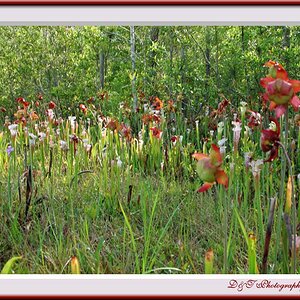

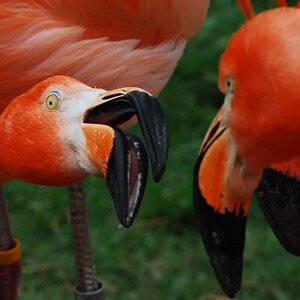

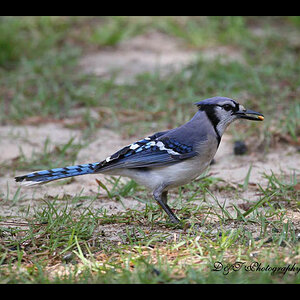

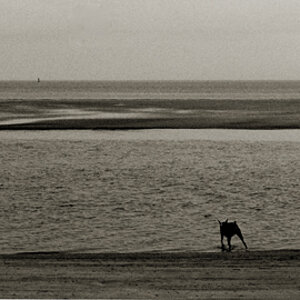

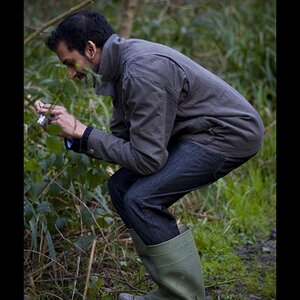


![[No title]](/data/xfmg/thumbnail/31/31741-ad9747739b48f0eb100f953fdf764930.jpg?1619734985)